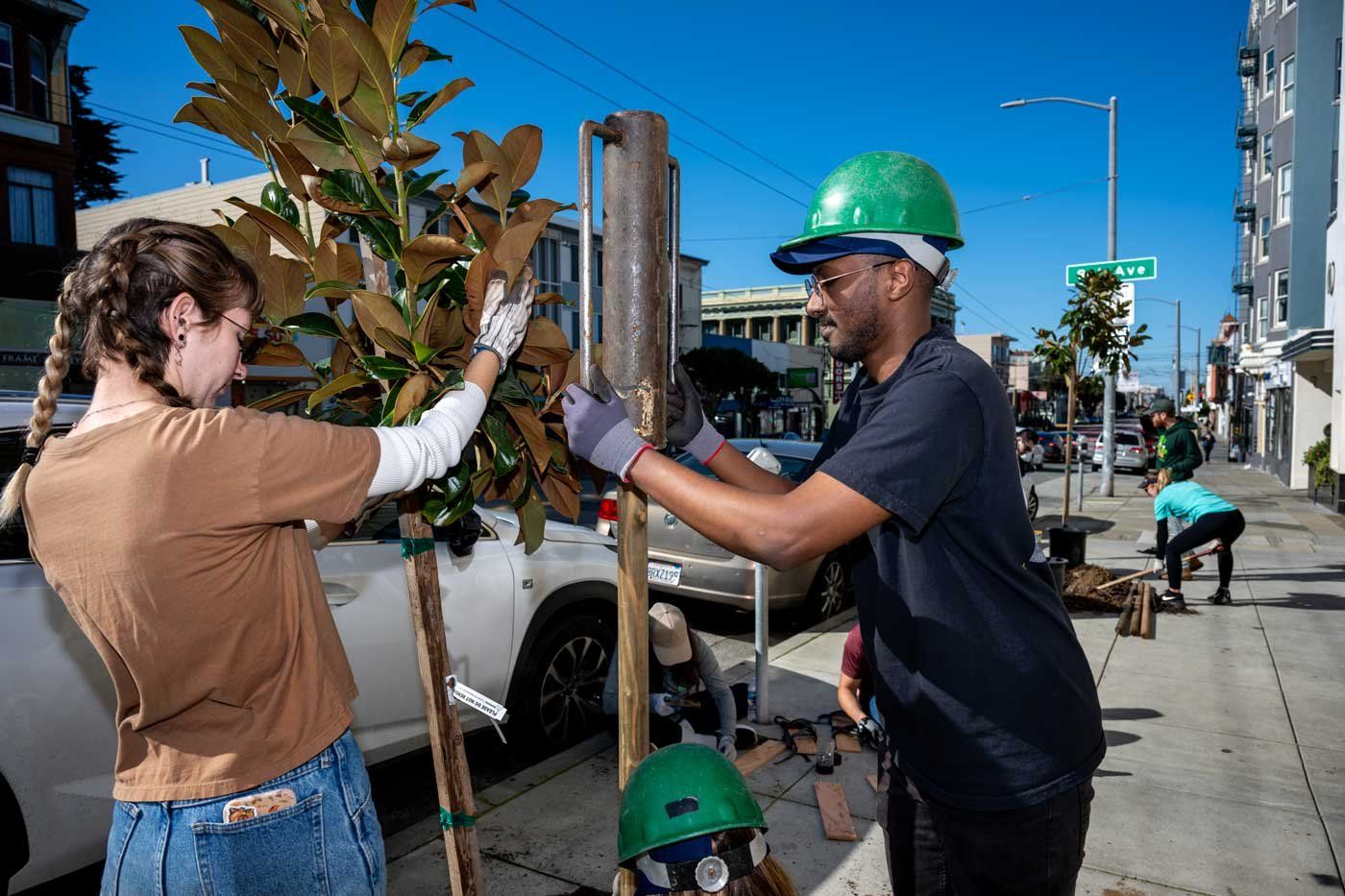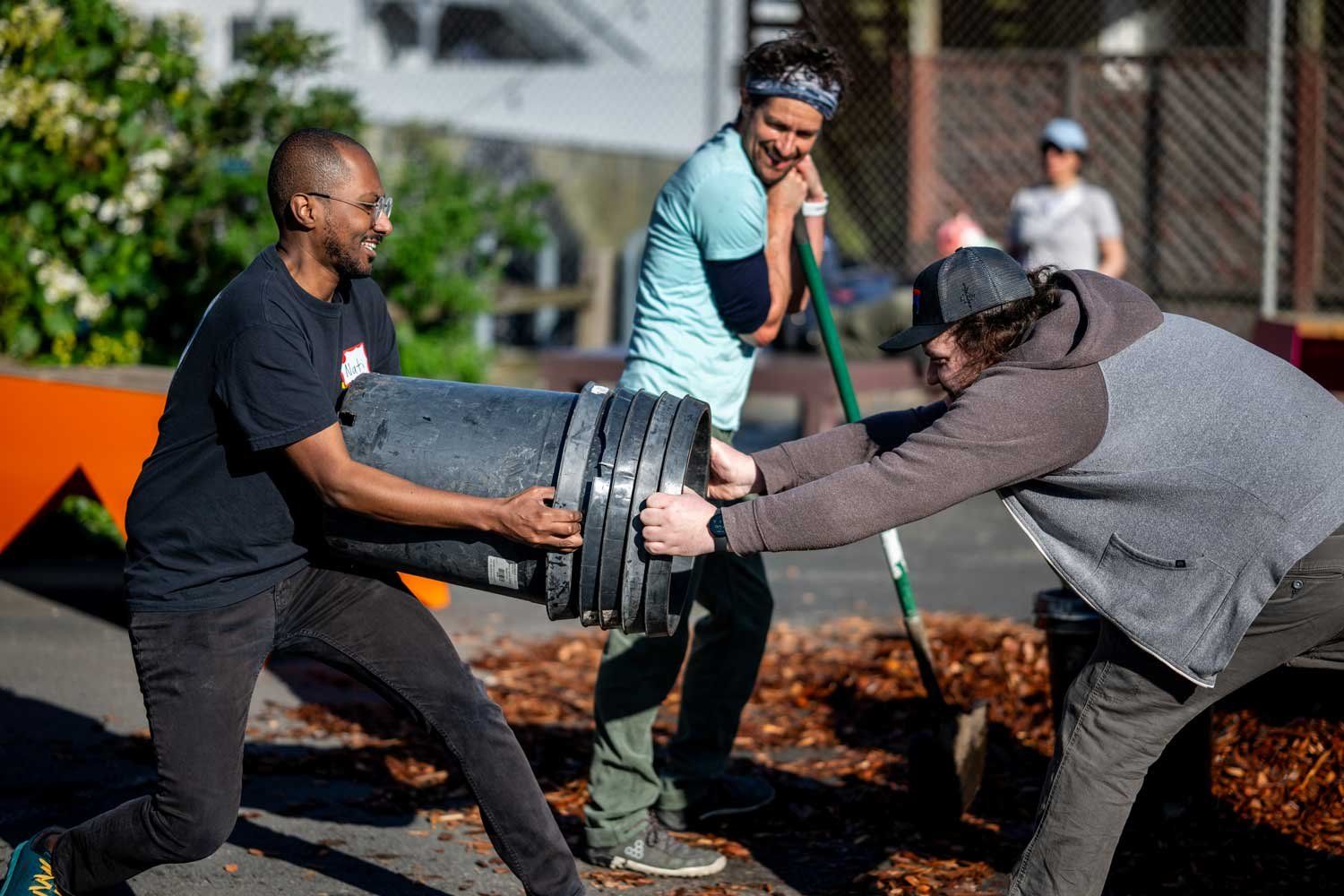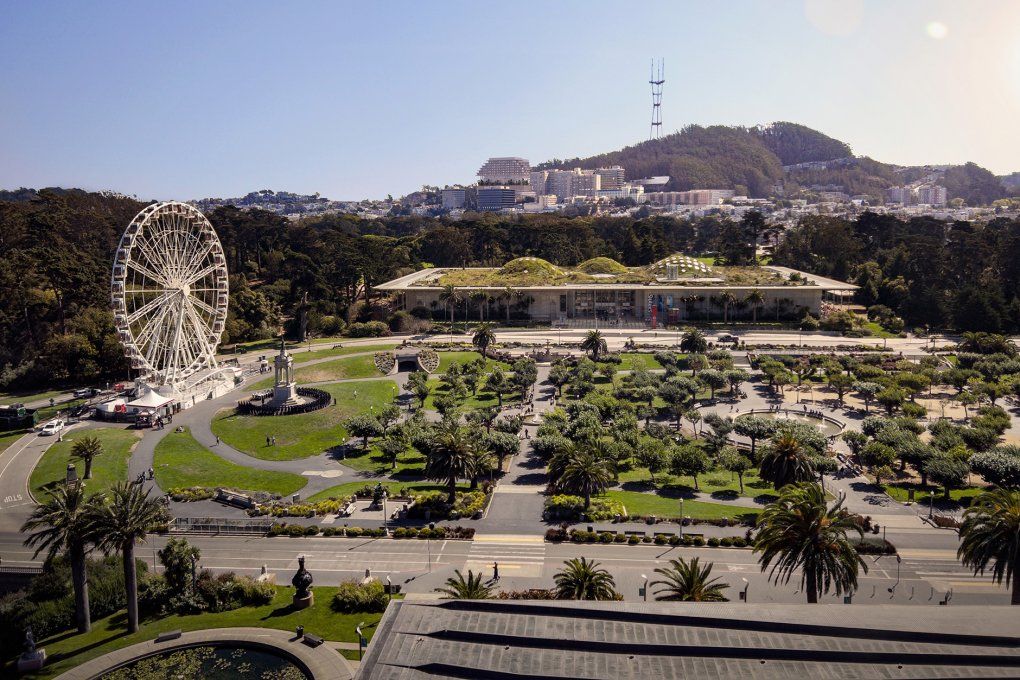Dozens of New Trees Take Root Around Parnassus Heights
Things are getting greener around UC San Francisco’s Parnassus Heights campus.
On Saturday, UCSF and a host of local volunteers celebrated the planting of 42 new trees on neighborhood streets surrounding the historic campus – kicking off a plan to renovate UCSF’s original home with 21st century research, education and health care facilities.
UCSF partnered with Friends of the Urban Forest, a nonprofit committed to revitalizing San Francisco’s urban forest and building community, to plant the new trees across the Parnassus Heights neighborhood. UCSF will also plant biodiverse, drought-tolerant species like grasses and shrubs in the coming months and years.
“UCSF’s Parnassus Heights neighbors have been invaluable partners in revitalizing our historic campus,” said Dan Bernal, UCSF vice chancellor, community and government relations. “We were thrilled to join passionate community members and Friends of the Urban Forest on Saturday to plant trees as part of our commitment to enhance the beauty and health of the surrounding neighborhood.”
An additional 25 trees – marina strawberry trees, primrose trees and Chinese elm to be planted at a later date – will line the street in front of both the new hospital at UCSF Helen Diller Medical Center and a new research and academic building at Parnassus Heights, keeping with UCSF’s 2:1 street tree replacement pledge for those that were removed along Parnassus Avenue.

Catherine Siefert (left) and Natnael Getahun (right) place a stake into the ground where a new tree is being planted. Photo by Deanne Fitzmaurice

Natnael Getahun (left) and Michael Roberts (right) attempt to separate buckets that are stuck together. Photo by Deanne Fitzmaurice

Signs are places at the site of each new tree. Photo by Deanne Fitzmaurice

Volunteer Anthony Castanos plants a tree. Photo by Deanne Fitzmaurice
In total, 67 new trees will be planted as part of the Greening Parnassus Heights Initiative, more than double the number removed in 2022 as the new hospital and projects got underway. While San Francisco only requires a 1:1 replacement ratio, UCSF has committed to replacing any trees that are removed with two new ones.
“I was thrilled to roll up my sleeves to help green the Inner Sunset,” said Abby Ellis, UCSF acting executive director of community relations and strategic partnerships. “By planting trees in partnership with community organizations like Friend of the Urban Forest and Inner Sunset Park Neighbors, UCSF is helping to deliver on our shared vision for a vibrant and healthy community with a green connection from Golden Gate Park to Mount Sutro through the neighborhood.”
A new urban greenbelt from ‘park to peak’

The Greening Parnassus Heights Initiative aims to create a holistic “healing habitat” designed for the new hospital that integrates plants, trees and natural light into the building’s architecture, including landscaping that spills over the sixth floor Sutro Terrace, along with green oases on the eighth and 10th levels of the building. The initiative also aims to create a “park to peak” greenbelt, connecting Golden Gate Park and the UCSF Mount Sutro Open Space Reserve.
“The park to peak concept is to connect visually and physically from Golden Gate Park through the neighborhood and campus to Mount Sutro,” said Joy Glasier, UCSF senior planner. “This neighborhood tree planting project is the first step towards that goal, creating a green and vibrant connection between campus and Golden Gate Park. With the new construction currently underway on campus, UCSF is creating more direct and publicly accessible connections from Parnassus Avenue to the Mount Sutro trails.”
Serving San Francisco for over 100 years
UCSF has called Parnassus Heights home since the 1890s. The location has been steadfast in serving San Francisco’s health care needs for over a century, from the 1906 earthquake to COVID-19 and everything in between. The hospital of the future draws on that proud history of public service to increase capacity at Parnassus Heights in order to provide world-class patient care to those who seek it.
Renowned architecture and engineering firms Herzog & de Meuron and HDR are designing the hospital to meet “whole-patient” needs, from leading-edge diagnostic tests, robotics, and therapies to providing light-filled private rooms, natural spaces, fresh air, and human connection – all essential to the healing process.
It’s scheduled to open in 2030.

